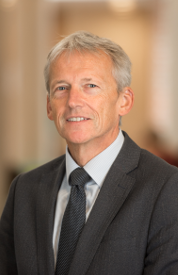Dr Kehinde Andrews has published the first book documenting the history of the Black Supplementary School movement in the UK.
Senior lecturer in Working with Children, Young People and Families, and Criminology at Newman University, Dr Kehinde (Kai) Andrews decided to write the book as, while a lot of research has been done into racism in education over the years, it has mainly focussed on state responses to the issue, ignoring the vibrant history of resistance to racism that grew out of Black communities themselves.
Kai said: “As we approach the 50th anniversary of the Black Supplementary School movement (2017), the issue of race in education is as pertinent today as it was when the movement was founded.
“While there is more awareness of racism – intended or otherwise – in education today, statistics* still show pupils from Black backgrounds are the lowest performing group at GSCE level so the issues addressed by the book are still very much alive today.”
Resisting Racism: Race, Inequality and the Black supplementary school movement provides a comprehensive account of the movement, which emerged out of a number of community-based educational campaign groups. It describes the history of the movement, some of the ideologies that emerged, its relationship to mainstream schooling and prospects for its future.
Kai continued: “The supplementary school movement is a truly grass-roots one but much of its history is undocumented. Individual schools sprung up around the country from the late 1960s onwards, often being held in people’s homes, but ideologies and methods of operation varied greatly from place to place.
“The unifying force behind the schools was a drive to help young Black children achieve, both in education and in life. When the movement began, Black children were frequently placed in schools for the ‘educationally sub-normal’, based on the results of culturally-biased IQ tests. In fact, up to 70% of Black Caribbean students were labelled as educationally sub-normal in some parts of London during the 1960s.
“The first supplementary schools were set up to provide an education for these children apparently abandoned by the State. By taking ownership of their children’s education and supporting them to develop a sense of cultural identity, the founders of the early schools hoped to equip Black children with the skills they’d need to succeed and go some way towards making up for the barriers to success that were – and still are to some extent – inherent within mainstream education.”
While the history of supplementary schools is somewhat disjointed, one issue that all supplementary schools have struggled with is how far to engage with the mainstream without compromising their raison d’être.
Kai continued: “As a movement set up to challenge and overcome issues within mainstream education, there has always been an argument that supplementary schools should not be necessary and mainstream education should instead evolve to recognise and reflect the needs of every child.
“By remaining outside the mainstream, supplementary schools can retain the independence they need to challenge convention and create bespoke programmes that address their students’ needs. But shouldn’t the State be funding these programmes if they’ve been put in place to overcome its own shortcomings? And if supplementary schools are funded by outside organisations, does that compromise their ability to challenge the establishment or open the door to dialogue that could improve the mainstream experience for everyone?
“Either way, the movement is a fascinating and vibrant one, whose history charts some of the most important social changes of the last 50 years.”
For more information visit the Newman University website.


Recent Comments